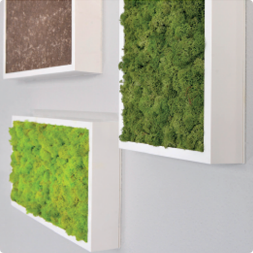Spring Houseplant Care Tips
Spring has sprung. The time of rebirth is upon us! The once cold, gray outdoors has come to light. The sun is shining brighter, birds are singing gleefully, and plants are waking from their long rest. You’ve spent all winter waiting patiently to prune your fiddle leaf fig or for your monstera to sprout another Swiss cheese leaf. It’s finally time! Hallelujah! It’s growing season again! In order to give your plants the best opportunity to flourish and thrive, follow the below tips from PLANTZ and watch your plants lavish you in green splendor.
Transplant or Repot
Perhaps you spent the winter rethinking your décor, and your current pots don’t fit your style anymore. Or maybe you used your extended wintry indoor time rearranging and redecorating your home. Maybe you finally realized your Janet Craig could use a larger pot. Whatever the reason, spring is a great time to repot those plants and give them the space and the style they deserve.
Steps
The first step in transplanting or repotting your plants after a long, hard winter is to congratulate yourself. You stayed strong. You did what was best for your plant and controlled every compulsion to do it all over the winter. So, pat yourself on your back and put on your garden gloves.
If your plant has grown, it is obviously important to buy a pot that is larger than your current pot. It should not, however, be excessively larger. Increase the pot size by about two inches and your plant will have a happy new home where it can spread itself out with new growth. Anything more than a couple of inches will require more soil which can lead you down the unwanted path of overwatering and root rot.
Next, pack some new potting soil into the bottom of the new pot to provide a base for your plant. Now it’s time to put your beautiful, lush plant baby into its new pot. Don’t pull the plant out of the existing pot by its stems or leaves. Tilt the pot to the side or even turn it upside down, and tap on the bottom of the pot, letting gravity do the work while protecting the fragile backbone of your plant.
Once out of the old pot, inspect the roots for any issues, like root rot, loosen them up if they are packed in tight. If you see any roots that have issues, prune them away gently, ensuring not to damage any surrounding roots. Also, start working away the old soil attached to the roots and base of the plant. This ensures that when you put your plant in the new pot and cover it with new soil, it is receiving fresh nutrients from the soil and eliminating anything negative from the old soil.
Finally, place your plant gently into the center of the new pot, adding new potting soil. Don’t pack the soil in. Allow it to stay loose. Also make sure to leave a space between the top of the soil and the lip of the pot or there may be issues watering the plant later.
Give Houseplants a Spring Feeding
Your plant may be in desperate need of nutrients after a long winter. As your plants reawaken, make sure to give them the nutrients they need to thrive in the spring. Fertilizers come in a variety of shapes and sizes from liquid to slow release to granular. Choose the right fertilizer based on the needs of your specific plant.
How Much to Add
If you have just repotted or transplanted your plant with fresh potting soil, you should not need to fertilize your plant for a few months. That fresh potting soil is chock full of needed nutrients. For plants that have not been repotted, make sure to read the labels on the fertilizer carefully and follow the instructions precisely. This is crucial as over fertilizing plants can cause severe damage to them.
Bring Plants Outside
If you bring your outdoor plants indoors during the winter, wait until the temperatures are consistently above 50°F before you start to move them back outdoors. Also, remember they’ve been in a low sunlight location for the past few months. Much like our eyes when we leave a dark movie theater, plants need some time to adapt to the bright sunlight again. When you move them outdoors, find a shady spot to place them for a few days and slowly move the plants that require more direct sunlight in brighter locations.
Are you looking to add some plants to your home this spring? Order your very own indoor plants from PLANTZ.com today!


















